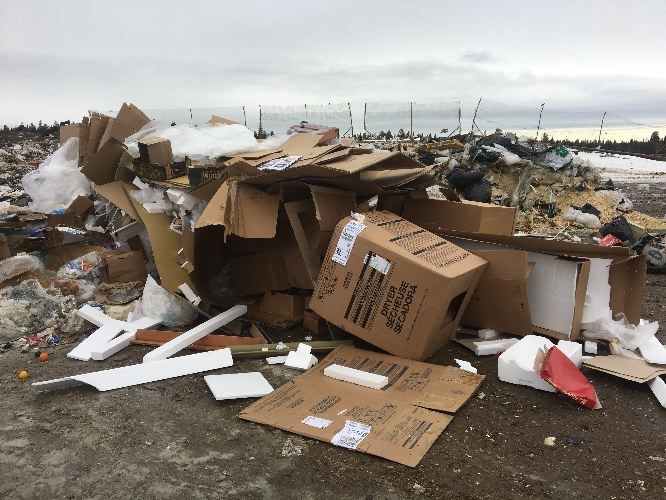Businesses will have to pay extra to drop cardboard off at the Foothills landfill in a few months time.
Beginning July 1, they will be assessed a 50-per-cent surcharge on their loads if corrugated card makes up 25 per cent or more.
And starting in January, the threshold will decline to 10 per cent and the surcharge will climb to 100 per cent. A year later, the threshold at which the surcharge is imposed will fall to five per cent.
The move is part of a larger strategy to decrease the per-capita amount of waste that goes into the landfill to a level closer to the provincial average and to increase the landfill's life.
Cardboard is a good starting point, Fraser-Fort George Regional District waste diversion program leader Laura Zapotichny said, because it can easily be recycled.
"There is a local recycler in town that can take a large amount of this material, it's easy to separate and we already have a lot of businesses that are doing this on their own," Zapotichny said.
She said larger businesses can arrange to rent cardboard bins and have the material taken to a recycler. Smaller ones who may not be able to afford the fee can take small loads to depots around Prince George.
About 60 per cent of the waste the landfill handles comes from commercial sources and about 17 per cent of the total waste is paper and cardboard. Households will not be affected although they are encouraged to recycle their cardboard and other items.
At $19.3 million, solid waste is the most-expensive service provided in the regional district's $34-million operating budget. Zapotichny said the program will have only a small effect on operating costs but will help lengthen the landfill's longevity.
As for determining the proportion of cardboard in a load, Zapotichny said that will be based on volume while the surcharge will be based on the load's total weight.
Zapotichny admitted there is the chance a business could hide cardboard in the middle of its load to avoid the surcharge, but "if a load gets pushed and then after the fact we find there is more cardboard in that load than originally thought, then the next time that customer comes in we can do a more thorough inspection."
Details about the commerical cardboard diversion program can be found at www.sortsmart.ca.



